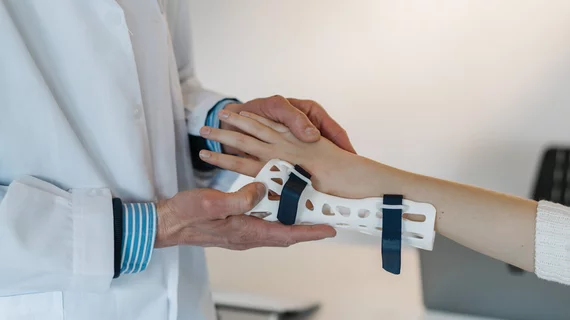9 ways to lift clinician completion of radiologist recommendations
A multidisciplinary panel convened by the ACR has developed a set of quality measures aimed at boosting rates of appropriate follow-up care for patients with noncritical but actionable incidental findings.
The overall success of the project will depend on robust adoption and follow-through by radiology practices, the authors acknowledge.
The group’s stated hope is to “improve communication and drive increased completion rates for radiology follow-up recommendations.”
The article’s lead and senior authors are, respectively, Nadja Kadom, MD, of Children’s Healthcare of Atlanta and Emory University, and David Seidenwurm, MD, of Sutter Health in California.
The team describes its work in an article published May 21 in JACR.
The convened panel of technical experts consisted of 16 members representing not only radiology but also emergency medicine, internal medicine, hematology/oncology and urology. Also represented were patients, health IT experts, practice managers, payers and others.
The group settled on nine quality measures and broke them into two categories—outcomes and processes—as follows:
- Measure 1 (Outcome): Closing the loop on completion of follow-up recommendations for actionable incidental findings
- Measure 2 (Outcome): Closing the loop on completion of follow-up recommendations for actionable incidental findings of abdominal aortic aneurysm
- Measure 3 (Outcome): Closing the loop on completion of follow-up recommendations for actionable incidental findings of pulmonary nodules
- Measure 4 (Process): Specificity of follow-up imaging recommendations for actionable incidental findings
- Measure 5 (Process): Evidence documentation in follow-up imaging recommendations for actionable incidental findings
- Measure 6 (Process): Communication to the practice managing ongoing care
- Measure 7 (Process): Communication of nonemergent actionable incidental findings to the patient
- Measure 8 (Process): Tracking and reminder system for incidental findings
- Measure 9 (Outcome): Patients’ cancer detection rate with follow-up imaging (surveillance measure)
Some of the measures “may currently seem unreasonably cumbersome, such as documenting that findings have been communicated to patients,” the authors comment, “but the technical expert panel included such measures to support and inform practices’ development of infrastructure that will enable best practices.”
More:
The intent of these measures is to focus improvement on specific areas in which gaps in communication and actionable incidental findings follow-up may occur, prompting systems to devote resources that will identify and implement solutions to improve patient care.”
More Coverage of Post-Imaging Follow-up Care:
Follow-up imaging for incidental liver lesions on breast MRI rarely necessary
Yale seeks help developing measures to address equity in incidental lung nodule follow-up
Follow-up ultrasound for incidental thyroid nodules on CT not always cost-effective
One-third of patients do not receive timely follow-up after their CT lung cancer screening
Analysis finds significant variation in radiologists’ follow-up recommendations for lung nodules
Reference:
Nadja Kadom, Arjun K. Venkatesh, Samantha A. Shugarman, Judy H. Burleson, Christopher L. Moore, David Seidenwurm: “Novel Quality Measure Set: Closing the Completion Loop on Radiology Follow-up Recommendations for Noncritical Actionable Incidental Findings.” Journal of the American College of Radiology, May 20, 2022. DOI: https://doi.org/10.1016/j.jacr.2022.03.017

